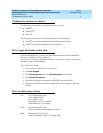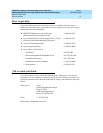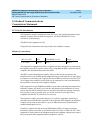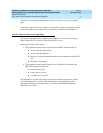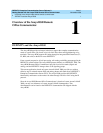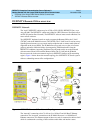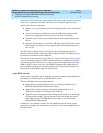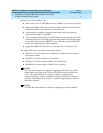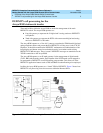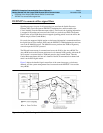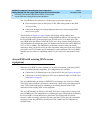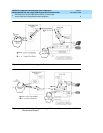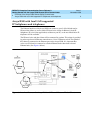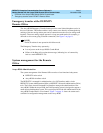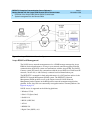
DEFINITY Enterprise Communication Server Release 9
Getting Started with the Avaya R300 Remote Office Communicator
Issue 1
November 2000
Overview of the Avaya R300 Remote Office Communicator
4DEFINITY Remote Office overview
1
Specifically, the Avaya R300 provides:
■ WAN access via E1, T1, BRI (BRI-S/T 4-wire or BRI-U 2-wire), and serial WAN.
■ Ethernet 10/100BaseT interface to provide IP routed connectivity to the local LAN
in the Remote Office. (This interface is a dual routed port.)
■ An IP router that is capable of supporting both interior and exterior gateway
routing protocols (RIP V2 and OSPF).
■ A Voice Over IP (VOIP) gateway to convert TDM-based audio streams (from DCP
and analog phone sets or incoming digital and analog trunks) into IP-based streams
for transport to/from the main DEFINITY site, or other IP-connected DEFINITY
remote sites and/or IP phones and IP softphones.
■ Support for CODECs including G.711 (A-law and U-law), G.729, and G.723
This digital WAN interface is based on four product models:
■ MX30-2T1-AC which contains two T1 interfaces (available in North American
and Japanese models).
■ MX30-2E1-AC which contains two E1 interfaces.
■ MX30-6ST-AC which contains six BRI 4-wire S/T interfaces.
■ MX30-6BU-AC which contains six BRI 2-wire U interfaces.
NOTE:
The T1/E1 WAN interfaces are capable of supporting robbed bit service, ISDN
Primary Rate service (both in full T1/E1 and FT1/FE1 modes), and frame relay
service. The North American T1 interface is capable of supporting up to
twenty-three 64 Kbps channels for PRI and twenty-four channels for robbed bit
signalling. The International E1 interface is capable of supporting up to thirty, 64
Kbps bearer channels.
NOTE:
The ISDN Basic Rate interface is capable of supporting two 64 Kbps channels.



